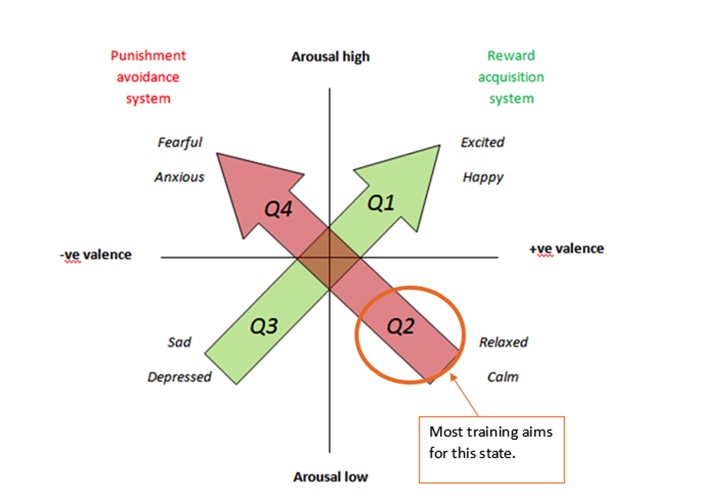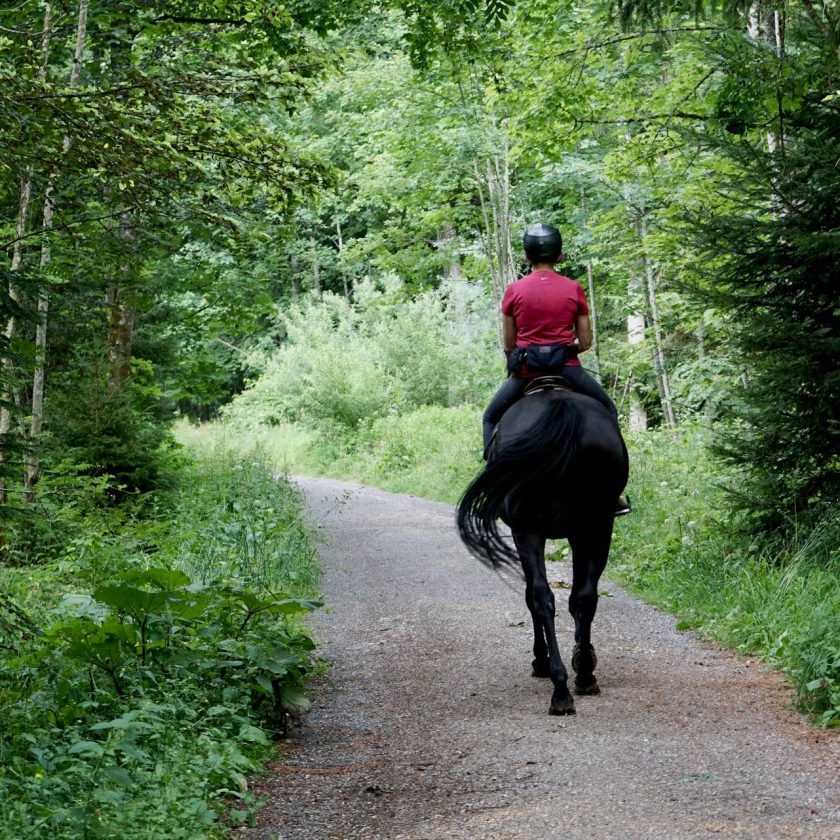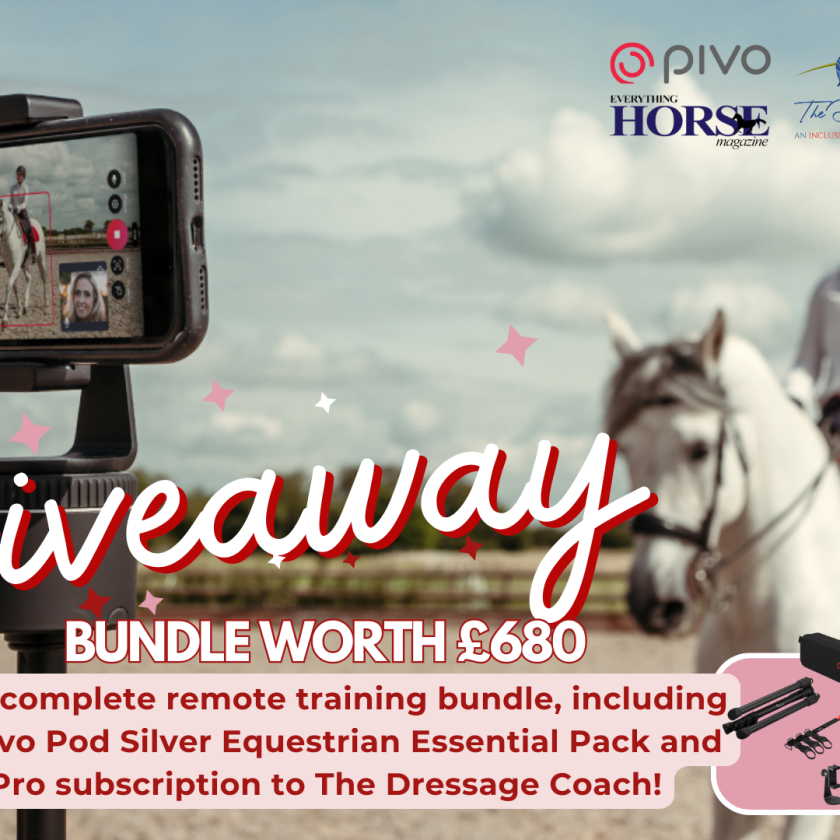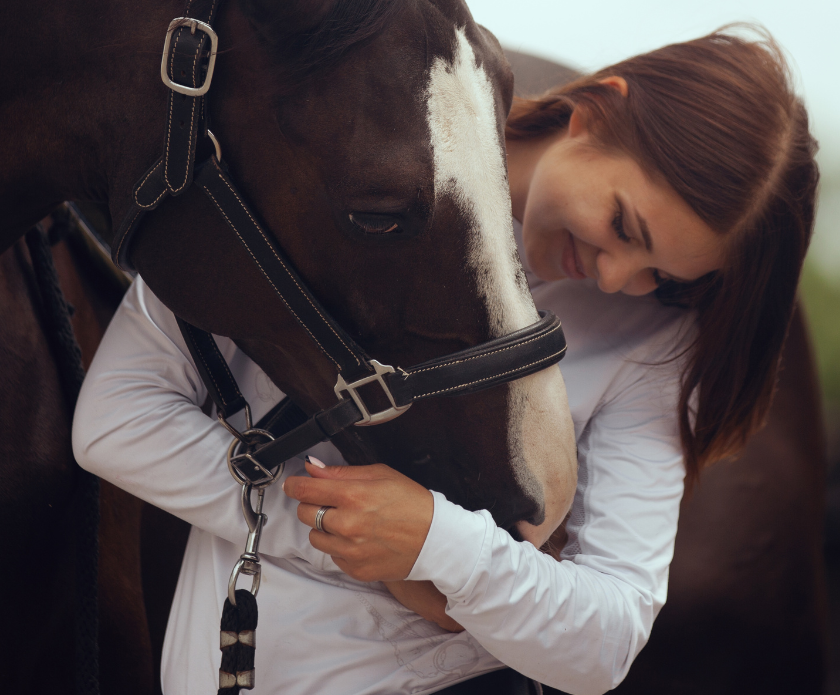Are you mulling over whether or not your horse is ready to ride? Alongside the physical aspect of skeletal maturity, the mental state of the horse or pony should also be considered before we set about breaking a horse in to ride, drive or for whatever discipline we decide to partake in.
In this article Clinical Animal Behaviourist, Loni Loftus, takes a look at a variety of factors to consider before embarking on this very important journey for horse, and rider.
Written by Loni Loftus, Clinical Animal Behaviourist
Significant research into when horses may be physically prepared for working life has been undertaken; however, their mental capacity for work is often less considered. In the human world, psychology is a massive aspect of athletic success. However, there is much less emphasis on this in the equine world.
Temperament, mood and arousal
Many horses are selectively bred for physical type, discipline capabilities and temperament traits. However, the horse’s psychological traits are significant components in task-orientated suitability and can have a huge effect on their behavioural responses and performance.
The horse’s temperament (psychological predisposition to certain behavioural traits in response to the environment or a challenge) is influenced by genetic factors and early life experiences during the malleable young months of life. In addition to these relatively static traits, horses will have more transient moods (which may be short or long term) and emotional reactions to specific triggers based on prior positive and negative experiences. These moods or ‘affective states’ are significantly altered by pain, changes in lifestyle (environment), handling and training.
In addition to temperament and mood, we must also consider arousal in the horse. Arousal is part of a horse’s psychological state, and when a horse becomes aroused, the sympathetic nervous system is activated. This system is responsible for being alert, prepared and ready to flee or fight if required. Therefore, for most non-competitive horses, we would look to see relatively low levels of arousal and high levels of positive valence (see figure 1).

However, for competing horses, we expect to see higher arousal levels to enable optimal performance (for those interested in the science, the currently accepted theory is the Yerkes-Dodson law or ‘inverted “U” theory’ where both under and over-arousal negatively impact on performance). Optimal arousal varies markedly between individuals and the specific task required; for example, the level of arousal needed for a dressage horse is very different to that of a flat racehorse.
Maturity
Young horses mature at different rates and will have different arousal levels according to their breeding, upbringing, weaning experience, maturity levels and general wellbeing. Consider this similar to the stages of equine physical development (table 1).
| Age | Physical development | Behavioural development |
| Birth | Pedal bone fused | Become curious about surroundings, exploring regularly interspersed with play and lots of sleep. Gradually they get used to people in close proximity from 2 weeks of age through the first few months of life. |
| 6 months | Short and long pasterns fused.
Thoroughbreds and other light horses will reach 84% of their mature height at the age of 6 months. During the first 6 months the foal will reach 46% of mature weight. Bone mineral content (BMC) is at 68.5%. | Foals learn through interactions with other foals and horses of varying ages in their social group. At this stage they should readily leave the dam for periods of play with other foals. Often foals are weaned at this time (much earlier than in a natural setting). |
| 1 year | Hock, cannon and knee bones fusing over the next 18 months.
TB’s reach 94% of mature height and 65% of mature weight at 12 months. BMC is at 76%. | Naturally foals may only just be weaned from the dam. Domestic weaning is often a traumatic experience occurring earlier in life, with lots of research showing that abrupt methods are damaging in later life. Object play is important for yearlings. Play between yearlings is often very physical and fast, they are practising life skills. |
| 2 years | Bottom of the radius fuses. Tibia and top of radius fuses around 2.5years. | Horses are beginning to sexually mature at this age. Some behavioural changes may be seen as a result or hormonal changes.
Horses at this age should be really used to people and being handled. |
| 3 years | Femur and humerus fuse. | As the horse matures it spends less time sleeping and playing (but this is still important) and can concentrate for longer on tasks. The horse is now the equivalent of a human in their mid-late teens or even early twenties depending on the temperament. |
| 3.5 years | Scapula and Pelvis fuse, vertebrae begin to fuse over next 2.5-3 years. | By this age many horses may look mature however they may be easily over-aroused by new stimuli and are coming into the peak of their experiential learning period (3-6 years). |
| 4 years | Scapula and Pelvis fuse | The horse will be physically stronger and will be showing the behavioural effects of its training up to this point. |
| 5 years | Mandible and Pelvis fuse | The horse should now be able to adapt to interact with a variety of animals, humans and other stimuli in a calm way providing it has had positive and low-key introductions to these things throughout early life. |
| 6 years | Vertebrae fuse.
Maximal BMC is achieved around 6 years. | The horse is entering its prime working years from a physical and mental perspective. |
Is the horse ready for work?
When considering whether or not a horse is ready for work, it is essential to consider the following aspects:
1. How physically mature is the horse?
a. Bone maturation
b. Height
c. Weight
d. Musculature
e. How quickly or slowly did the horse grow, and was it a steady increase over time? (Rapid or uneven growth can lead to Developmental Orthopaedic Disease)
2. How mentally mature is the horse?
a. How does he cope with new environments?
b. What reaction do you get to new stimuli?
c. Does he immediately react or stop to think?
d. Does he calm down quickly after arousal?
e. Is arousal proportionate to the stimulus or event?
3. Who is best placed to help my horse into working life?
a. Can I do this myself, or should I consult a professional?
i. Do I have time
ii. Do I have support
iii. Do I have the facilities?
iv. Do I have the knowledge and experience?
b. If hiring a professional, consider;
i. Their qualifications, knowledge and experience (don’t be afraid to ask for these).
ii. Their values and training philosophy (this is THE most important aspect to consider). Punitive methods should be avoided – for an evidence-led, practically competent professional view equine practitioners at www.abtc.org.uk
iii. How your horse will be kept and what your involvement will be.
Ideally, you should be involved in the process – you are going to be the long-term rider of the horse.
iv. How long will it take, and how much will it cost. Slower is better, but this can get expensive, so you may need to consider alternative options.
Some horses are just not ready to start work when we think they should be or when we want them to. Sometimes this can be due to physical causes, and at other times it is down to psychological unpreparedness. Often big, strong horses are perceived as mentally ready before they are actually capable of undertaking a calm introduction to working life.
Sadly, some horses may never be ready or able to undertake the work we have planned for them due to physical and/or mental limitations. However, for most horses, even those who may appear psychologically challenged, working with a fully qualified and accredited Clinical Animal Behaviourist can help resolve and manage issues to develop a harmonious working relationship.
Preparing the horse for working life
To help prepare the young horse for working life, there are several things that we can do:
- Consider your horse’s type, breeding and temperament in relation to what she would be best at doing. Some horses excel in competitive environments, while for others, it makes them anxious and unable to cope. Some horses are bred for speed or stamina or jumping ability, so try and match your horses’ genetics to his job where practicable.
- If you are breeding your own foal, you have an opportunity to get everything right for your horse’s early years to set her up for success – plan carefully and follow the up-to-date literature around breeding, weaning, and raising youngsters – a lot has changed over time, so it is essential to consult a behaviour professional if you are unsure of the best methods to socialise, wean and handle your foal/youngster.
- If you are buying a youngster, try to gather as much information on your potential horse’s upbringing so far – spending time with the owner/breeder to see their methods, management practices, and your horses’ early life stage environment is important when trying to purchase a well-adjusted youngster.
- If the history of your youngster is a little vague, then it is always safest to assume the lowest/least optimal levels of early management and then adjust expectations from thereon.
- Take time to teach your horse the basics in a low-key, reward-based manner to set them up for success.
Early learning goals
From a young age, train your horse to understand that you are a good person to be around and someone they can trust.
Ensuring that you are calm and consistent when around your horse will reassure them and help them see you as a safe companion. Spending time just being around your youngster, doing nothing in particular (apart from perhaps the odd wither scratch, head rub or treat) can help to build a strong bond.
Using positive, reward-based training methods makes learning fun, interactive and ‘worth it’ for the horse, which means they will choose to engage with you. Play games with your youngster, including hide and seek, scent work and basic trick training to develop your relationship.

Start off teaching your youngster some basic clicker training and target training so that you can effectively mark the behaviour you want from your horse with a click (or verbal marker) and reward the horse with a treat. Use target training to teach your youngster to stand still, move around, move the forehand or quarters, load into a horsebox, stand for the farrier, cope with veterinary procedures calmly and safely – the list of positive early training is long and hugely beneficial to help produce a well-adjusted and calm horse in the future.
By the time it comes to thinking about backing your horse, you should have trained calm and reliable responses to a range of cues so that your youngster can cope- without stress- with daily life, husbandry procedures, going away from the herd, travelling, in-hand work, visiting new places and investigating new sights and smells with interest and motivation rather than fear and tension. If these calm behavioural responses are absent, consider working on these aspects before moving on to any ridden work.
What if my horse doesn’t seem ready?
Wait! That’s it – simple! Don’t break him (literally or figuratively). Okay, so it may be frustrating, disappointing, upsetting and so on but consider this – if you feel that your horse is not ready for work emotionally, physically or from both perspectives, what are the benefits of pushing on regardless?
Sure, you may be able to push the horse along and have him acquiesce to being ridden but at what cost? Effectively you are asking the horse questions that it can not answer.
The horse may fight with you or flee from you or shut down from you; one of you will have to ‘give up’ – often, this is the horse because we can utilise gadgets and training techniques to quell unwanted behaviours. What happens then? The trainer walks away feeling that they have won (even if they recognise it was an unfair contest), and the horse feels anxious, without agency and perhaps even uncomfortable. There has been no two-way communication – this is breaking, not training.
Instead, you can wait and undertake some more relationship-based training to help the horse trust and relax. Educate the horse to help them spend time away from home gradually and positively. Take part in some in-hand exercises to strengthen the physically weak horse – ultimately, give them time. A few extra months of preparatory work will make the backing and riding away process much smoother and more rewarding for the horse and trainer when it does happen.
If you are worried about your horse physically, ensure you have a thorough vet check to ensure that no medical issues are holding training back. Often extreme responses are brought about through pain, and we understand that pain also causes anxiety in the horse, which can escalate behavioural responses further.
Practice watching, reading and understanding the fine details of your horse’s body language. Learn the subtle signs that your horse is becoming uncomfortable with something long before seeing a big behavioural response. Our horses are experts at non-verbal communication—however, we, as humans, are often not brilliant at reading their language.
Subtle signs of discomfort (called calming signals by clinical behaviourists) are blinking, looking away, half closing the eyes, chewing, yawning, stretching the jaw, turning the head, shaking the body, showing the hindquarters or flanks (subtly) and slowing down in pace/mobility.

These signals are presented in order to appease or calm. If these fail, the horse will move onto gradually more overt signs, including displacement behaviours such as sniffing, pawing the ground, rubbing the head down the leg or on objects, licking objects, rolling, head swinging. These can escalate into stress signals where we see a mid-to-high head position, showing of the white of the eye, clenched lips and tense jaw, active ears, tense muscles, clenched tail, increased defecation and urination, pacing, changes in eating or drinking and increased startle reactions.
As things escalate, we start to see the performance of chase and threat behaviours as the horse attempts to make distance between itself and the thing it is worried about, and this can lead further to freeze, flight and/or fight behaviours.

If we imagine these signs as a ladder of escalation, we should aim to stop the progression of the behaviours as soon as we see them at the calming signals stage. If we see them rising to stress signals and distance increasing behaviours, we have pushed the horse far too far and should immediately stop and take some steps back to where the horse is calm and not displaying any stress signals.
In conclusion, every horse is unique with individual experiences, genetics, physiology and emotional responses. Therefore, we must learn to communicate at an individual level with each horse to understand their behaviour and enable us to make evidence-led, informed decisions around their training and development. Taking our time, reducing pressure and engaging in empathetic, positive and consistent training are the greatest educational gifts we can give to a horse.




